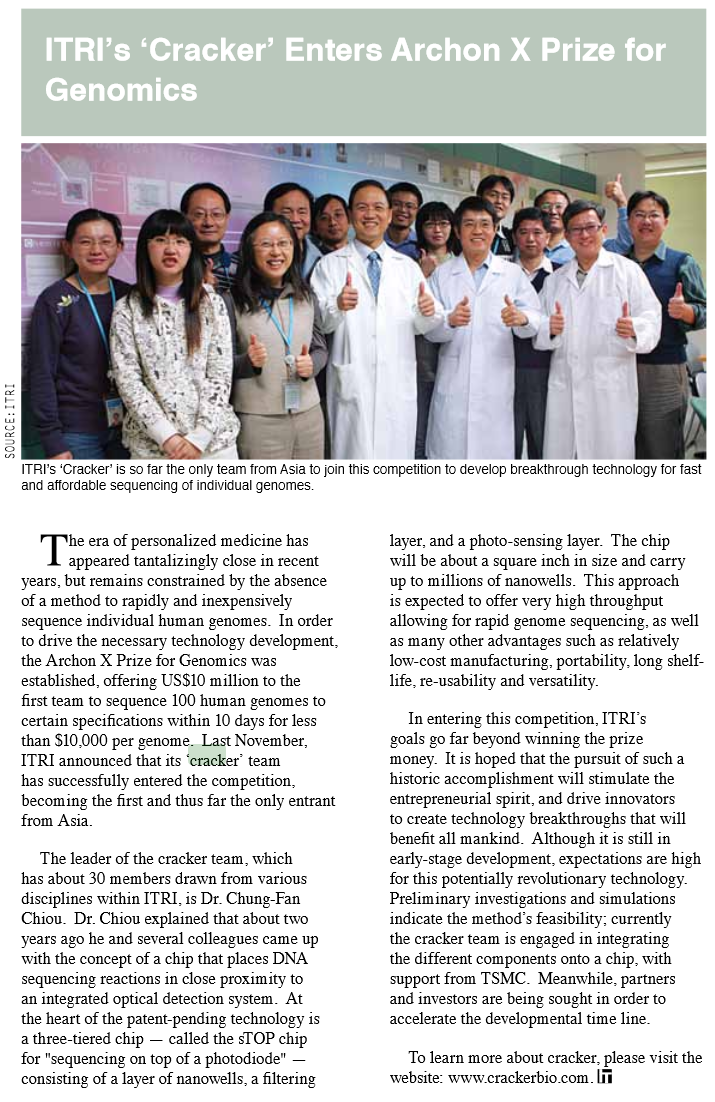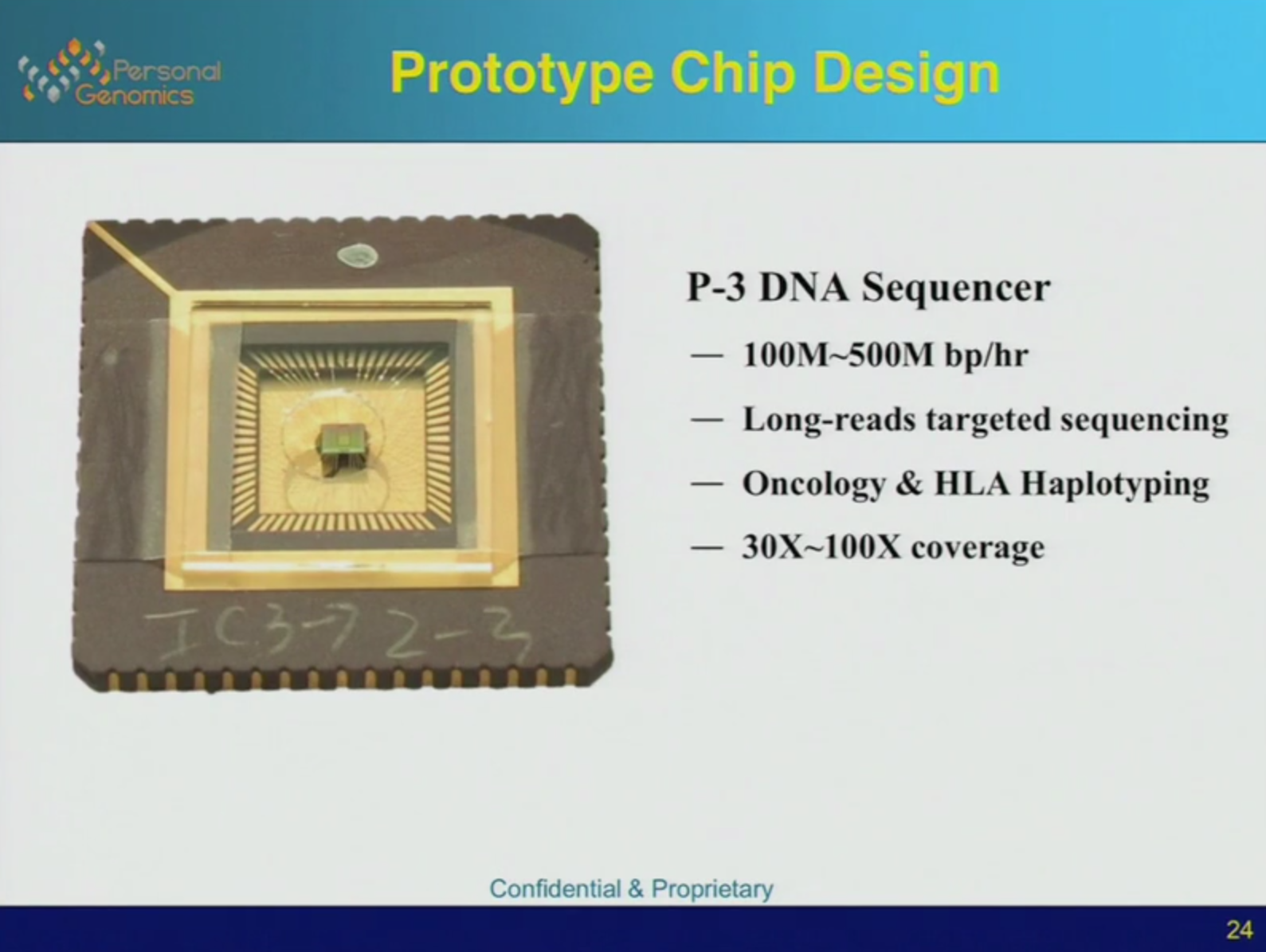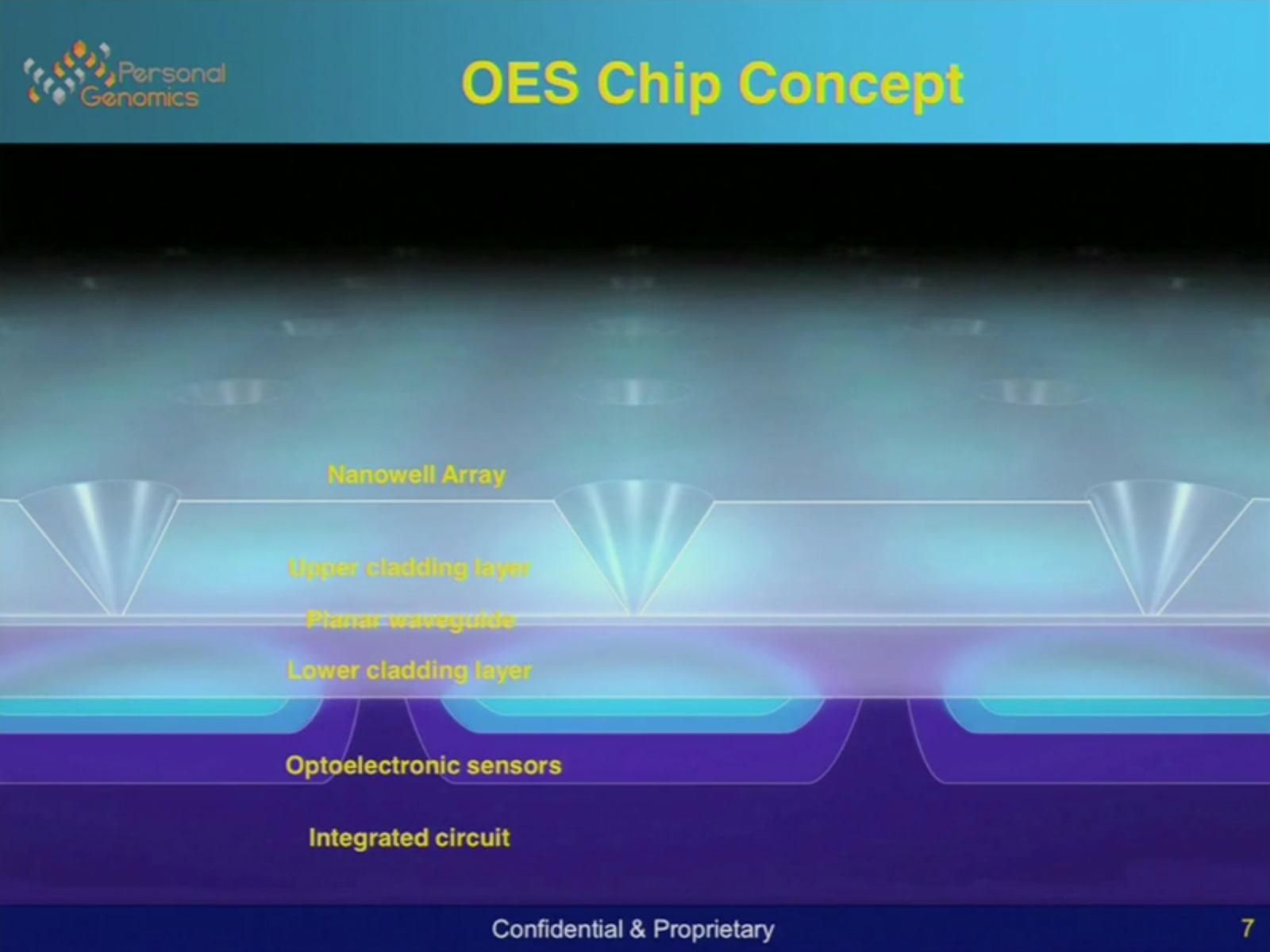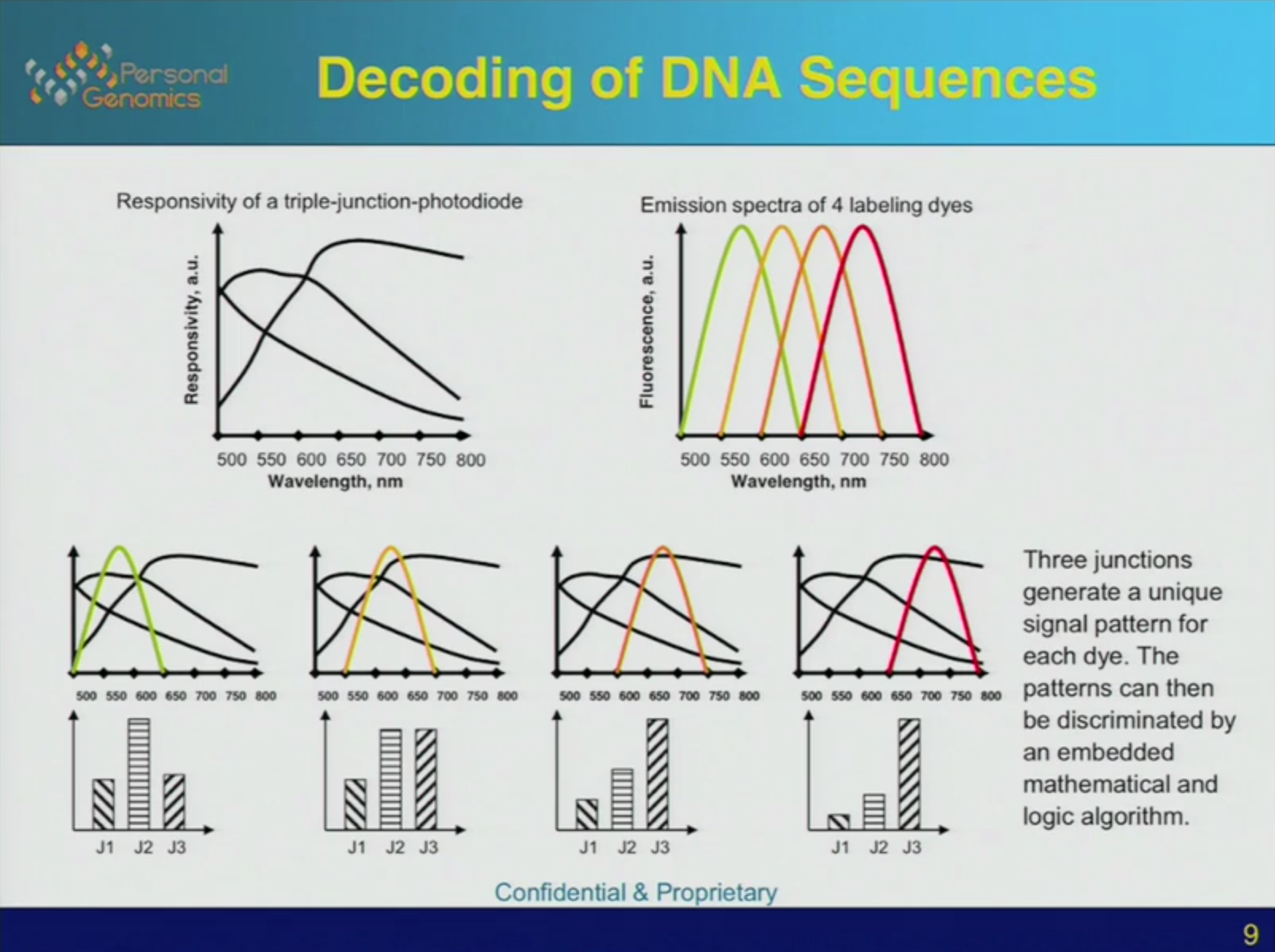Are you sure this isn’t horse? – DNA Sequencing is Universal Sensing
 Today DNA sequencing is dominated by research applications. This is likely to continue in the short term, but in the medium and long term the future of DNA sequencing is likely to look very different.
Today DNA sequencing is dominated by research applications. This is likely to continue in the short term, but in the medium and long term the future of DNA sequencing is likely to look very different.
Fundamentally I see sequencing as a new class of sensor. People talk generally discuss sequencing in the context of human health. But as sequencing decreases in cost and becomes easier to use it becomes more like a general purpose sensor. Like CMOS imaging chips for example, it will have research,clinical, and consumer applications.
The Medium Term
In the medium term it’s clear that DNA sequencing will be making its way into the clinic. Companies like 23andme which screen for inherited genetic traits are one obvious application. The genetic screening of every child at birth is somewhat attractive, and could provide everyone with a dataset they could draw upon throughout their lifetime. With 4 million births a year in the US, this is a pretty big market, but it’s perhaps not the biggest.
There are 1.7 million new cancers reported each year in the US, cancer is an inherently genetic disease, and each of theses cases would ideally be sequenced in full to better understand its genetic cause.
But better than understanding a cancer once you know it exists is to detect it early so you can do something about it. Companies like Illumina’s newly founded GRAIL seek to use DNA sequencing to regularly screen for cancer. For various reasons both complete, and fragmented cancer cells end up in a patents blood. By taking a simple blood sample you should therefore be able to screen for cancer using DNA sequencing. Screening every US adult every 5 years gives you a market for 50 million test a year.
The screening market is much bigger than this. There are more than a million sepsis infections a year in the US screening for early detection of sepsis and other infectious diseases would be of huge value. In fact is seem obvious that when bulk sequencing for <$100 becomes generally available, blood serum would be sequenced as a matter of course. That single test could detect cancers, infectious diseases, and provide a genetic profile of any unborn children as well as the patent themselves.
If we sequenced every patient admired to hospital, that would result in ~30 million genetic tests in the US alone.
The Long Term
In the longer term it’s clear that sequencing costs will drop even further. My guess is that the basic sensing technology will drop as low as cheap CMOS imaging sensors are today. These cost almost nothing, on the order of a dollar. Unlike CMOS sensors though I expect DNA sequencer to always be single (or few) sample use. But overall it seems reasonable to expect that the cost of sequencing will drop to the $10 mark.
Combined with on chip extraction techniques this could create a simple consumer grade platform. But what exactly would a consumer do with cheap sequencing.
There are a few ideas I’ve heard thrown around. One is routine sequencing at borders. This would allow quick detection and containment of viral outbreaks. This might be feasible at the $10 mark, though it may have significant legal and moral implications.
I think it’s more likely that at that level people would be routinely sequencing themselves anyway. Every time you have a cold, or feel a bit under the weather you’d sequence some samples and find out exactly what was wrong with you. It’s possible that this could lead to targeted medication but reassurance that “there’s nothing serious wrong” is probably worth $10 to most people, and is a lot more comforting than a doctor saying “it’s probably nothing come back if you still feel bad in a week”.
You’d likely be using DNA sequencing as a QC in agriculture and food processing too. To track contamination, source of infection, or monitor supply chains. It’s so cheap that it makes sense to do this on a per-batch basis.
And in agriculture, it will be used to monitor the health of livestock, in much the same way as it would be used to monitor human health.
Some have even suggested that DNA sequencing will be integrated directly into toilets, which will in no doubt cheerily intone your wellbeing, or setup a doctors appointment for further tests.
DNA sensors in public spaces might continuously monitor for airborn viruses.
Ultimately I think everyone will have a DNA sequencer in their home, either continuously monitoring the occupants health, or used as required. Perhaps enabling to answer questions like “is this really not horse meat?”
If we can beat a $10 sequencing run and head toward $1 even more applications open up. “What’s this plant?” You could try and look it up, but why not just sequence it, and as a bonus get a complete genotype. How clean are my work surfaces? Sequence the bacterial population?
The eventual global market for sequencing is likely to be in the 10s of billions of tests per year.
Disclosure: I always try to be as unbiased as I can. However, I have worked for DNA sequencing companies. I own stock in DNA sequencing companies. And I continue to work in the industry.




